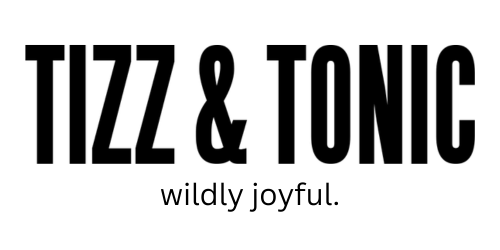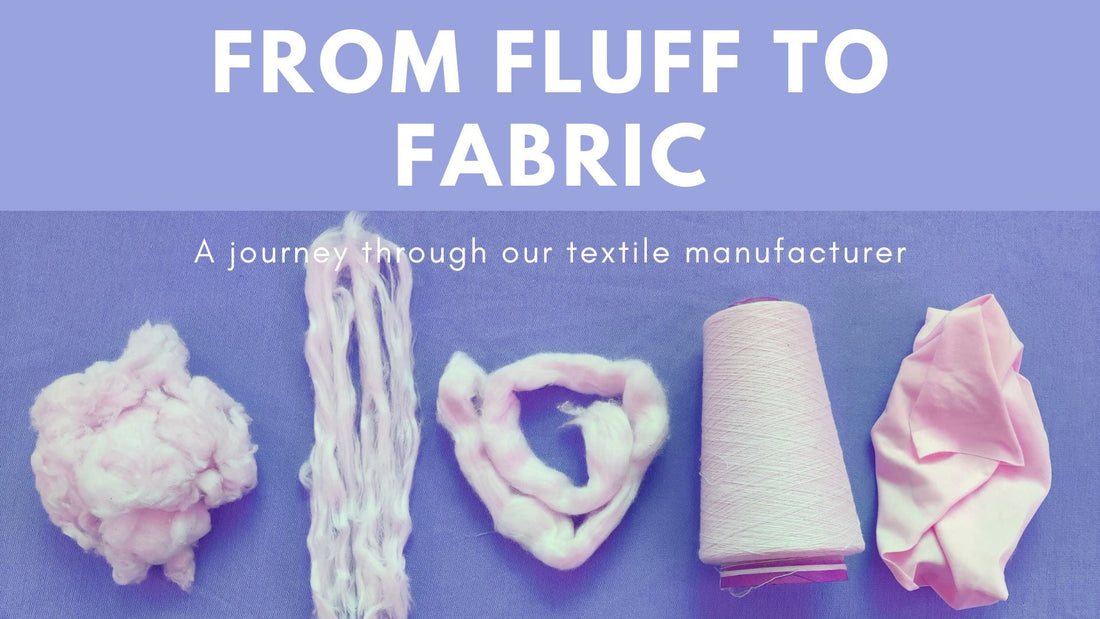At Tizz & Tonic we talk a lot about our ultra soft, bright, and innovative fabrics, but have you ever been curious about how this process really works? How does yarn become the fabric we wear and love? We were lucky enough to explore this journey first hand at the SANKO Holding Textile manufacturers in Gaziantep, Turkey. This is where all the Tizz & Tonic fabric is produced.

From yarn processing to knitting, dying, and finishing, this is a fascinating adventure and a process that we think clothing-wearers around the world should know more about. Because let’s face it - clothing is an integral part of almost everyone's everyday life.
Come with us on the tour as we weave our way through the process, step by step so you can see how a fluff of cotton turns into your favourite textile.
Step 0: Fiber production
This part of the process we were not able to see because it involves the growing of the fibers.
SANKO is a cellulosic fiber producer which means they only work with plant-based fibers (cotton, modal and lyocell). It is on our bucket list to see a cotton farm or modal plantation in full swing but until then you can read more about the starting blocks of these textile chains in our blog posts about why we love organic cotton and buttery soft micromodal.
Step 1: Yarn Processing: Getting the Basics Right
This first step in the factory is where the harvested fiber is spun into yarn. The process starts with bales of fibers and the fibers are then opened and mixed appropriately in order to have the correct elongation (the amount of stretch) of the fiber. Imagine a hand combing through big bales of fluff. During this whole phase the quality is controlled and any impurities are removed.

After the sorting and ‘fluffing’ of the raw materials, the fibers are then combed. This is the most important part of the spinning process - parallelising the fibers which means putting them all in the same direction.

Following that, the fibers are then spun in a fancy way and this spinning process turns these fibers into yarn. The yarn becomes the base for our fabric. It's a vital stage where the foundation for the textile's future look and feel is set.


Step 2: The Knitting Process: Creating the Structure
The spinning of the fabric might set the foundation but the core of textile manufacturing is the knitting stage. Knitting is where technique meets structure.
The SANKO knitting house was loud and exciting to see. Their high-end machines were a whirl of needles and thread, taking hundreds and hundreds of threads and turning them into sheets and sheets of fabric.
🌱FUN FACT: Around 4000 needles are going at once for the making of our Second-Skin micromodal fabric! For our jersey fabrics between 2300-2600 needles are used per machine!

The yarn is woven together, forming the fabric's design. Whether it's a soft micromodal or organic cotton sweat, knitting defines the fabric's pattern and construction. Each stitch contributes to the final texture and appearance. SANKO also has a circular knitting facility which means that the yarn is formed into a series of interconnected loops by the knitting needles that move in a circular motion. This creates a tube of fabric. This tube of circular-knitted materials are produced seamlessly and spirally, allowing for their ability to produce unusual and super-quality knitted structures.


In the knitting house we got to see the knitting of fabrics of one-thread fabric (example: 100% cotton), two-thread fabrics (example: organic cotton blended with elastane - this you’ll know from our collection) and 3-thread fabrics which are basically processes that need different qualities on the front and back like sweat shirts.
🌱FUN FACT: You may notice that your sweatshirt has a soft fluffy side and a harder outside. This is made by knitting together 3 threads, a fine thread (cotton for the inside), polyester or elastane for the stretch and a thicker cotton for the outside of the garment.

Step 3: Dying and Printing: Colour and Character.
The SANKO dye house was brimming with activity - loud with the flurry of machines and busy bodies managing the dying and drying processes. This stop was one of our favourites of the tour. The dye house offers a dynamic mix of conventional processes like jet dying and modern processes like digital printing plus some research and development for new more sustainable dying methods.

For this part of our tour we had two enthusiastic guides who were very passionate to show us the whole process, all their current innovations and their well organized laboratory. They also work directly on our Tizz & Tonic seasonal fabric collections so it was truly a delight to meet them and see first-hand how much of it is done.
In the dye house, the process kicks off with the preparation of the fabric for dying. This includes a first step of singeing the fabric. Singe literally means to burn superficially and technically so the singeing here refers to the burning-off of loose fibers or yarns that are not firmly bound into the fabric structure.
Singeing of a fabric is done in order to obtain a clean fabric surface which allows the dying to be consistent and the structure of the fabric to be clearly seen.


After the fabric has been prepared it is ready for dyeing or printing. This is where it will either enter into a jet dye or into a giant digital printer. The jet dyer looks like a giant washing machine but instead of cleaning it is dying the materials. Like in a washing machine there is no fabric drive reel to move the fabric and the movement is created by force of water. In these machines, both the fabric and the dye liquor are in motion, thereby facilitating a faster and more uniform dyeing process.
All the application and mixing of the dying chemicals is automated which allows for much less contact of the workers to have with the chemicals, plus more accurate dying which eliminates errors and waste. After the materials have been dyed the fabric needs to be washed and rinsed to lock in the colors and make sure they stay vibrant.

Then finally the fabric undergoes finishing processes. These treatments ensure the fabric is soft, smooth, and ready for its intended use. The materials are dried and quality controlled by workers who watch and note imperfections while the fabric is being spun onto the rolls before they get packed up to be shipped.

🌱FUN FACT: SANKO pays their workers properly with added social security benefits and lunch is included with every normal working shift.
The Colour Lab
We were really excited to also be invited into the lab where all the chemicals are mixed, tested and the colours are analyzed using spectrometry. It was truly a “colour lab” where everyone is obsessed with getting the perfect matching colours and we were thrilled to see our past samples that were printed and dyed hanging in the lab. Also it is always fun to meet the amazing team behind all the work that goes into producing these colours and creating prints for our collections.

The Tour Concludes
The journey from yarn to fabric involves practical steps, each contributing to the creation of unique textiles. Yarn processing sets the base, knitting forms the structure, dyeing adds personality, and finishing ensures functionality. It's a blend of science, innovation, human power and automation that transforms raw materials into the fabrics we love and wear daily.
We were truly fascinated by the whole process because we know all the work that goes into producing a garment let alone all the steps it takes to produce the materials before. It was also such a privilege to be able to go to Turkey and be hosted by the wonderful people who make our materials and are very passionate and proud of their work.

